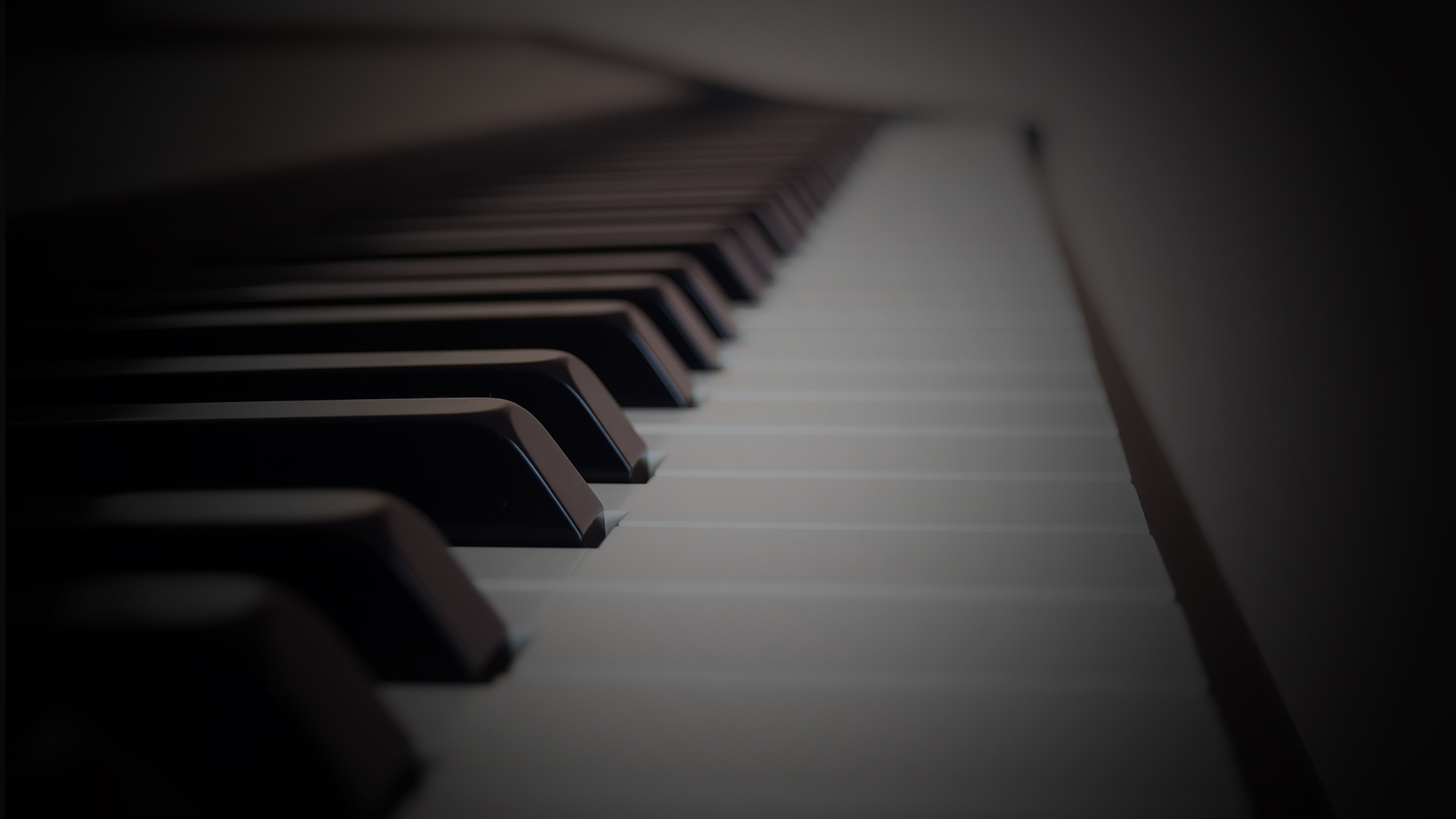Play Piano Like Harry Connick Jr.
Learning Focus
Music Style
Free Lessons
Get free weekly lessons, practice tips, and downloadable resources to your inbox!
Whenever you see Harry Connick Jr. sit down at a piano, you know that a party’s about to begin! What if you could channel that same energy in your own playing? In today Quick Tip, Play Piano Like Harry Connick, Jr., John Proulx shows you essential New Orleans piano techniques inspired by Harry’s irresistible musical personality. You’ll learn:
- Introduction
- 5 Festive Harry Connick, Jr. Style Piano Techniques
- Application: Play a Harry Connick, Jr. Style Piano Arrangement
Introduction
Harry Connick, Jr.’s multi-faceted career in the entertainment industry as an actor, TV personality, vocalist, composer and bandleader has been so successful that a non-pianist could conceivably overlook his talent as a piano player. For example, Harry career as an actor spans over 3 decades and includes 21 films such as Memphis Belle (1990) Copycat (1995), Hope Floats (1998), Basic (2003), Dolphin Tale (2011) and Find Me Falling (2024). In addition, Harry is well-known for his TV appearances as a judge on American Idol (2014–2016) and as the host of the Emmy-nominated daytime talk show Harry (2016–2018). As a recording artist, Harry has released 26 albums, sold over 30 million records and won 3 Grammy awards. His most popular albums include When My Heart Finds Christmas (1993) and Only You (2004), which feature mostly cover songs sung in a crooning style. However, Harry’s gateway into the performing arts began when he started playing the piano at age 3. By age 5, was already performing and he played on his first recording when he was just 10 years old.¹
Harry Connick, Jr.’s Piano Style
Harry Connick, Jr. was born and raised in New Orleans, where he absorbed the rich and distinctive heritage of the birthplace of American jazz. As a young boy, he learned to play New Orleans jazz piano by shadowing and imitating James Booker.² Later, as a teenager, Harry took formal jazz piano lessons with Ellis Marsalis, who taught him how to play bebop.³
Harry Connick, Jr.’s first two albums are most representative his New Orleans roots—the self-titled Harry Connick, Jr. (1987) and 20 (1988).⁴ The latter album opens with a virtuosic performance of the jazz standard “Avalon,” which showcases many of the techniques that we’ll explore in today’s lesson.
Harry Connick, Jr.
“Avalon” (1988)
“…the type of music I play and the direction from which I approach music is definitely highly influenced by New Orleans, and I’m sure I wouldn’t be the person I am and musician I am had I not been from there, so I’m greatly indebted to the city.” ⁵
—Harry Connick, Jr.
5 Festive Harry Connick, Jr. Style Piano Techniques
The following lesson identifies 5 techniques that you can use to begin playing piano in the style of Harry Connick, Jr. All of the examples we’ll examine are excerpted from the lesson sheet PDF that is included with this lesson. This lesson also includes 5 downloadable backing tracks. These resources will appear at the bottom of this page after you log in with your PWJ membership. In addition, PWJ members can also easily transpose the lesson sheet material to another key using our Smart Sheet Music.
Alright, let’s take a look at the first Harry Connick, Jr. piano technique in today’s lesson.
#1: Left Hand New Orleans Bass Line
New Orleans jazz is frequently built around a syncopated bass line that comes from the Cuban tresillo rhythm, which is also known as the habanera rhythm. This syncopated figure features three notes per measure, which occur on beat 1, the “and of 2” and beat 4. An early example of this rhythm, which Jelly Roll Morton referred to as “the Spanish Tinge,” can be heard in his composition entitled “New Orleans Blues” (1925). This rhythm also forms the foundation of Harry Connick, Jr.’s solo piano arrangement of “Avalon” (1988).
The following example demonstrates the tresillo rhythm in the left hand over the form of a 12-bar blues in C at 120 BPM.

Take a moment to try to play this bass line along with the demonstration above or with one of the other backing tracks. Afterward, you’ll be ready to move on to the next step.
#2: Right Hand Counter Rhythm
On some piano recordings, Harry Connick, Jr. includes a specific counter-rhythm that compliments the tresillo rhythm. One such instance of this occurs in “Avalon” around 2:46. The key to understanding this counter-rhythm is to observe that it fills in the 8th-note grid between each note of the tresillo.
The following example demonstrates a New Orleans style bass line the left hand against a counter-rhythm in the right hand at 120 BPM.

Next, we’ll turn our attention to some melodic techniques.
#3: Melodies Harmonized with 6th Intervals
New Orleans pianists like Harry Connick, Jr. frequently play melodies that are harmonized with 6th intervals. For instance, the following example demonstrates a riffy melodic figure in the right hand that is harmonized with parallel 6ths. (Note, such melodies often include the ♭3 note as a chromatic passing tone, just as in the example below.)

#4: Melodies Harmonized with 3rds Intervals
Another technique that Harry Connick, Jr. often employs in his piano playing is to harmonize a melody with 3rd intervals. The following example demonstrates the use of parallel 3rds within a catchy right hand riff.

#5: Blues Turnarounds
Another common musical convention in the New Orleans piano style is the inclusion of bluesy turnarounds at the conclusion of a chorus or section. Such turnarounds frequently appear in Harry Connick, Jr.’s piano music.
Basic Blues Turnaround
Harmonically speaking, a turnaround is a creative way to move from the tonic chord (the Ⅰ chord) to the dominant chord (the Ⅴ chord), which in turn resolves back to tonic. The example below demonstrates this harmonic movement in the key of C major.

It should come as no surprise that New Orleans pianists have a number of ways of spicing up their turnarounds to make them even more flavorful. Therefore, let’s explore three common turnaround variations.
Variation 1
The following turnaround features an 8th-note rhythm that employs catchy leaps to a drone note on top…the note C.

Variation 2
Next, let’s examine an even flashier turnaround variation that incorporates triplets.

Variation 3
So far, each of the turnarounds we’ve examined have featured a descending bass line in the left hand. However, another common approach is to ascend or “walk up” to the dominant note in the bass line, as in the following example.

To discover even more bluesy turnarounds, check out our courses on 10 Essential Jazz & Blues Endings (Int, Adv).
Application: Play a Harry Connick, Jr. Style Piano Arrangement
In the final section of today’s piano lesson, we’ll combine all of the techniques that we’ve studied so far into a fun, original arrangement by John Proulx entitled “A Handful of Gumbo.”
Intro and A Section
“A Handful of Gumbo” opens with an intro section that draws on the final four measures of a 12-bar blues form combined with a simple blues turnaround. Afterward, the A section features parallel 6ths in the melody over a syncopated New Orleans style bass line in the left hand.

B Section and Ending
In the B Section of “A Handful of Gumbo,” the right hand switches to a more active riff that incorporates the use of parallel 3rds. This section concludes with a “tag” in which the last four bars of the blues form are repeated twice. However, for the final two bars, the parallel 3rds riff is replaced by a bluesy turnaround with triplets.

Conclusion
Congratulations, you’ve completed today’s lesson on Play Piano Like Harry Connick, Jr. With the concepts that you’ve learned in today’s lesson—and a bit of practice—you’ll be able to bring the festive New Orleans piano sound with you wherever you go!
If you enjoyed today’s lesson, then be sure to check out the following PWJ resources:
Courses
Jazz Swing Learning Tracks
Blues Piano Learning Tracks
Thanks for learning with us today! We’ll see you next time.
Would you like to comment on this lesson?
Visit this Quick Tip on YouTube
¹ “Bio.” Harryconnickjr.com.
² Goldsmith, Margie. “Harry Connick, Jr.” Business Jet Traveler, AIN Media Group, Inc., Dec. 2014.
³ “Harry Connick Jr. On Piano Jazz.” Npr.org, 27 Nov. 2014.
⁴ Lowry, Todd. New Orleans Piano Styles : A Guide to the Keyboard Licks of Crescent City Greats. 1st ed, Hal Leonard Corp., 2013.
⁵ Blickley, Leigh. “Harry Connick Jr. Hopes New Orleans Is a Model of How to Rebuild after a Hurricane.” HuffPost, 16 Oct. 2017.
 Writer
Writer
Michael LaDisa
Michael LaDisa graduated from the University of North Texas with a major in Music Theory & Composition. He lives in Chicago where he operates a private teaching studio and performs regularly as a solo pianist. His educational work with students has been featured on WGN-TV Evening News, Fox 32 Good Day,...
More Free Lessons
Want to master piano chords? In this one-year practice plan, I show you what to practice every day for the next year.
Alma Deutscher shows us how to improvise a beautiful piano piece with just 4 notes randomly chosen from a hat.
Jacob Collier just played Stride Piano unlike anything I've heard, and it's incredible! I break it down for you so you can learn his tricks.
Looking for downloads?
Subscribe to a membership plan for full access to this Quick Tip's sheet music and backing tracks!
Join Us
Get instant access to this Quick Tip and other member features with a PWJ membership!
Guided Learning Tracks
View guided learning tracks for all music styles and skill levels
Progress Tracking
Complete lessons and courses as you track your learning progress
Downloadable Resources
Download Sheet Music and Backing Tracks
Community Forums
Engage with other PWJ members in our member-only community forums
Become a better piano player today. Try us out completely free for 14 days!



